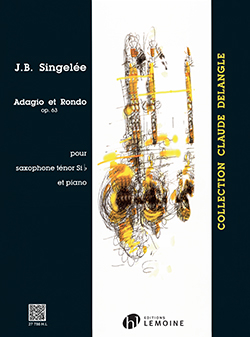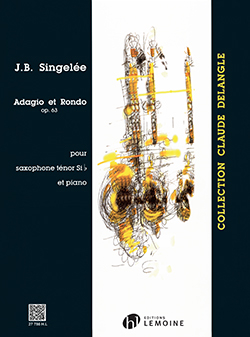Opens in a new window
Editions Henry Lemoine Adagio et Rondo Op.63 - Singelee - Tenor Saxophone/Piano - Sheet Music

- Composer/Author: SINGELEE, JEAN-BAPTISTE
- Instrumentation: SAX TENOR
- Model # 27786HEX
Format: Sheet Music
Instrumentation: Bb Tenor Saxophone and Piano
Level: 2
The Brussels-born conductor and composer Jean-Baptiste Singelee (1812-1876) played violin in various orchestras (including that of the Opera-Comique in Paris) before being appointed solo violin at the Theatre Royal in Brussels. He then took over the direction of the orchestras of both the Royal Theatres in Gand and Brussels. In addition he was a prolific composer and wrote, among other works, two concertos and numerous Fantaisies for violin, various other instrumental pieces and ballet music (for the Theatre de la Monnaie). Apparently Singelee, who was a close friend of Adolphe Sax whom he had met during his student days at the Ecole Royale de Musique in 1828, was among those who persuaded Sax to develop in particular the family of the four main saxophones that go to make up a quartet, although only he and Demersseman took an interest in each of the four instruments. He wrote for all of them, leaving some twenty fantasias and competition solos for the final examinations of the Conservatoire, and two quartets.
Q & A
There are currently no questions for this product.
Reviews
There are currently no reviews for this product. Be the first to write one!





